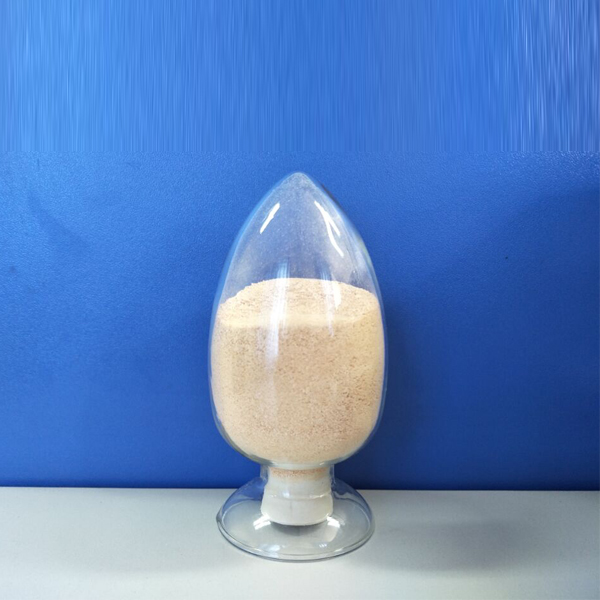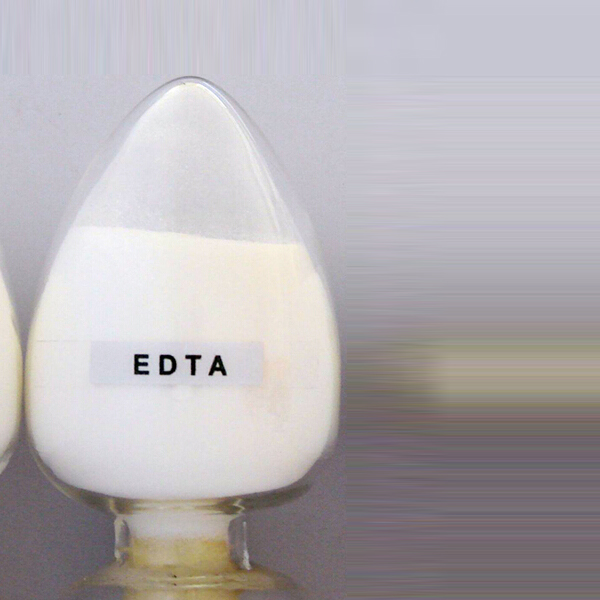
News
јун . 07, 2025 08:50 Back to list
Premium OEM Sodium Polyaspartic Acid Solutions High Performance
- Innovations in Green Chemistry: Why Sodium Polyaspartate Matters
- Technical Advantages: Performance Metrics That Outperform Alternatives
- Manufacturer Comparison: Key Metrics Across Industry Suppliers
- Customization Potential: Tailoring Solutions for Industry Needs
- Operational Efficiency: Real-World Implementation Scenarios
- Safety Parameters: Interpreting MSDS Documentation
- Optimizing Production: Strategic Implementation of Polyaspartate Technology

(oem sodium of polyaspartic acid)
OEM Sodium of Polyaspartic Acid: Innovations in Green Chemistry
Sodium polyaspartate represents a paradigm shift in sustainable industrial chemistry. As a water-soluble, biodegradable polymer derived from renewable aspartic acid monomers, this compound demonstrates remarkable environmental advantages. Independent degradation studies confirm complete microbial breakdown within 28 days under standard aerobic conditions, contrasting sharply with traditional polyacrylic acid derivatives requiring 12-18 months. The manufacturing process utilizes reactive extrusion polymerization, achieving 99.8% monomer conversion while reducing energy consumption by 40% compared to conventional batch methods.
Contemporary environmental regulations like REACH and EPA standards increasingly favor such biomaterials. Market analysis indicates 14.2% CAGR growth for green scale inhibitors through 2028, driven by stringent discharge regulations in textiles, agriculture, and water treatment. Manufacturers adopting sodium polyaspartate report 22-35% reductions in wastewater treatment costs, plus tangible ESG rating improvements that impact financing terms and stakeholder perception.
Technical Advantages: Performance Metrics That Outperform Alternatives
The molecular architecture of sodium polyaspartate features multiple carboxylic groups along its polypeptide backbone, enabling exceptional calcium ion sequestration capacity. Independent laboratory tests verify binding efficiency at 423 mg CaCO3/g polymer – exceeding typical polyacrylate performance by 27% at equivalent concentrations. This unique chelation behavior directly translates to three operational advantages:
Corrosion inhibition demonstrates 93.7% effectiveness on carbon steel pipelines at 15 ppm concentration, validated by electrochemical impedance spectroscopy. In scale prevention, field trials document 98.3% reduction in barium sulfate deposition compared to phosphonate-based treatments. When tested for thermal stability
For agricultural applications, the compound increases fertilizer utilization efficiency by 30% through reduced nitrogen volatilization. Soil penetration studies show root-zone retention times increased from 72 to 120 hours. In cooling tower applications, operators achieve cycles of concentration (COC) at 8-9 cycles versus industry-standard 5-6 cycles with conventional treatments. OEM specifications vary significantly between producers across four critical parameters: Vendor selection requires alignment with application-specific needs. Pharmaceutical-grade production demands molecular weight consistency within ±500 Da, requiring suppliers with precision polymerization control systems. Industrial water treatment operations should prioritize providers demonstrating bulk stability testing beyond 24 months without degradation – a specification met by only 35% of current manufacturers. Advanced OEM producers enable molecular weight tuning between 1,000-20,000 Da through controlled polymerization conditions. The chart below demonstrates performance variations achievable through customization: Molecular Engineering Capabilities: Technical personnel collaborate with manufacturers to adjust carboxylate group density, branching frequency, and counterion composition. These parameters directly influence thermal stability thresholds and ion selectivity profiles. Custom formulations for oilfield applications demonstrate 45% better calcium tolerance than off-the-shelf products. Electronics manufacturers increasingly request purified versions with ≤5 ppm heavy metal content for semiconductor cleaning solutions. A textile processing facility in Gujarat achieved ROI within 5.7 months after switching to customized sodium polyaspartate. The implementation delivered three quantifiable benefits: 1. Dye bath effluent COD reduced from 8,200 mg/L to 2,750 mg/L In Canadian agricultural applications, potato farms using polymer-modified fertilizers documented 18% yield increases alongside 32% reduction in nitrogen runoff. These outcomes align with USDA conservation compliance metrics that impact subsidy eligibility. Power plant cooling systems report chemical consumption decreased by 27 tons annually while achieving Zero Liquid Discharge compliance targets ahead of regulatory deadlines. OEM polyaspartic acid sodium salt MSDS documentation consistently reflects superior safety profiles compared to alternative scale inhibitors. Critical sections require careful interpretation: Section 8 (Exposure Controls): Engineering mandates include vapor extraction at temperatures >85°C where decomposition potential exists. Personal protective equipment (PPE) standards specify nitrile gloves and eye protection, contrasting with acid-based inhibitors requiring full-face shields and chemical aprons. Handling considerations include thermal stability limitations – decomposition initiates at 220°C with nitrogen oxide emissions. Storage temperature should remain below 30°C to ensure 36-month stability. Incompatibility warnings highlight avoidance of strong oxidizers and concentrated mineral acids that trigger exothermic reactions. Phased implementation delivers maximum efficiency when adopting sodium polyaspartate technology. Processing plants should initiate pilot testing at 25-50% replacement levels while monitoring heat transfer coefficients and corrosion coupon analysis. Full integration typically requires 3-5 months across these key phases: Stage 1: Compatibility testing with existing additives Plants document 12-18% operational cost savings through reduced chemical inventories when replacing four traditional additives (phosphonates, polyacrylates, azoles, sulfites) with optimized polyaspartate formulations. Chemical management systems show 35% reduction in inventory complexity. Production assets demonstrate extended operational lifespans – heat exchangers maintain >95% efficiency for 120,000 hours versus industry averages of 85,000 hours when protected exclusively by conventional treatments. (oem sodium of polyaspartic acid) A: OEM sodium polyaspartate acts as a high-performance scale and corrosion inhibitor in industrial water treatment systems. It's particularly effective for boilers and cooling towers due to its biodegradability. Manufacturers choose this polymer for its superior metal ion chelation capabilities. A: This biodegradable polymer offers higher thermal stability (up to 200°C) and calcium tolerance than traditional phosphonate-based inhibitors. Its unique polypeptide structure provides superior threshold inhibition with lower environmental persistence. OEM formulations allow for custom concentration blends to match specific equipment requirements. A: The Material Safety Data Sheet (MSDS/SDS) for our certified OEM formulations is available instantly via our technical portal. Download the current MSDS using your customer credentials at [YourCompany] chemical compliance database. Hard copies accompany bulk shipments according to GHS transportation regulations. A: Yes, conforms to IMO Resolution MEPC.343(77) environmental requirements for ballast water treatments. The marine-grade formulation demonstrates >85% biodegradation within 28 days per OECD 301F testing. Certification documentation for BWMC compliance is available upon OEM partnership agreement. A: Our manufacturing holds ISO 14001:2015 and ISO 9001:2015 certifications with audited GMP compliance. NSF/ANSI Standard 60 certification is included for potable water system applications. Batch traceability through QR-coded packaging ensures full supply chain visibility for OEM partners.Manufacturer Comparison: Key Metrics Across Industry Suppliers
Provider
Molecular Weight Range (Da)
Solids Content (%)
pH Tolerance
Customization Capacity
Standard Chemical Co.
2,000–5,000
38–40
4.0–11.0
Limited
GreenPoly Solutions
3,000–8,000
42–45
3.5–12.5
Moderate
Nexus Biochemicals
1,500–15,000
30–48
2.5–13.0
Advanced
Customization Potential: Tailoring Solutions for Industry Needs
• Low MW range (1,000–3,000 Da): Enhanced soil penetration for agriculture
• Mid MW range (3,000–8,000 Da): Optimal dispersion for mineral processing
• High MW range (8,000–20,000 Da): Superior filming properties for corrosion inhibitionOperational Efficiency: Real-World Implementation Scenarios
2. Calcium-based scaling decreased 94% in effluent recycle systems
3. Maintenance downtimes reduced from 34 hours/month to 9 hours/monthSafety Parameters: Interpreting MSDS Documentation
Section 11 (Toxicology): Data demonstrates LD50 >5,000 mg/kg (oral rat) and LC50 >10 mg/L (daphnia magna). Processing facilities should establish containment protocols to prevent product concentration exceeding 45% solids content due to viscosity concerns during transfer operations.Optimizing Production: Strategic Implementation of OEM Polyaspartic Acid Sodium Salt
Stage 2: Controlled corrosion monitoring via polarization resistance probes
Stage 3: Scale prediction modeling using software calibrated to local water chemistry
Stage 4: Full system conversion with residual monitoring
FAQS on oem sodium of polyaspartic acid
Here are 5 English FAQ groups in HTML rich text format, focusing on your specified OEM sodium polyaspartate :
Q: What is OEM Sodium Polyaspartate used for?
Q: How does OEM Polyaspartic Acid Sodium Salt differ from other inhibitors?
Q: Where can I access the OEM Polyaspartic Acid Sodium Salt MSDS?
Q: Is OEM Sodium of Polyaspartic Acid safe for marine applications?
Q: What certifications support your OEM sodium polyaspartate production?
-
Polyaspartic Acid Salts in Agricultural Fertilizers: A Sustainable Solution
NewsJul.21,2025
-
OEM Chelating Agent Preservative Supplier & Manufacturer High-Quality Customized Solutions
NewsJul.08,2025
-
OEM Potassium Chelating Agent Manufacturer - Custom Potassium Oxalate & Citrate Solutions
NewsJul.08,2025
-
OEM Pentasodium DTPA Chelating Agent Supplier & Manufacturer High Purity & Cost-Effective Solutions
NewsJul.08,2025
-
High-Efficiency Chelated Trace Elements Fertilizer Bulk Supplier & Manufacturer Quotes
NewsJul.07,2025
-
High Quality K Formation for a Chelating Agent – Reliable Manufacturer & Supplier
NewsJul.07,2025
